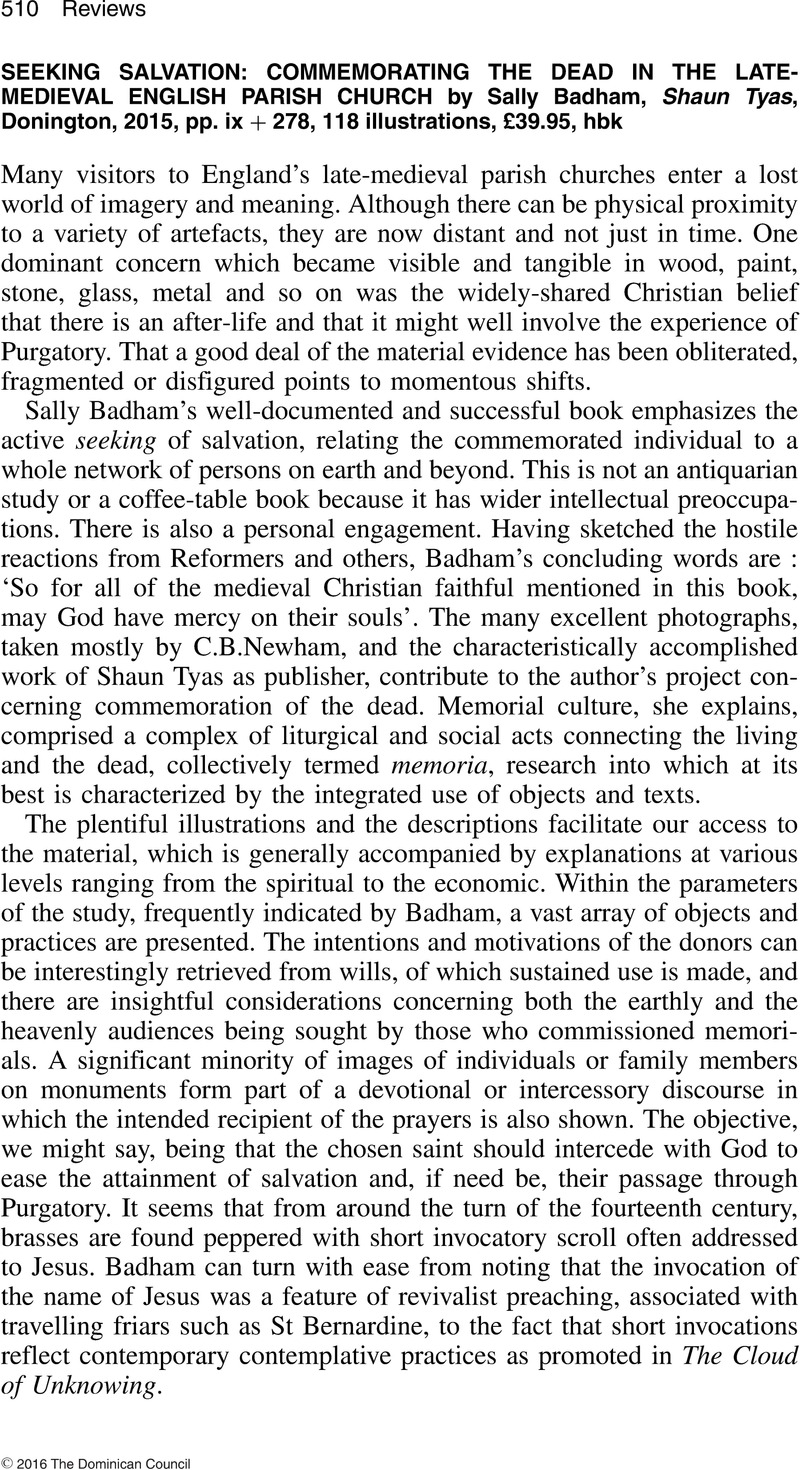No CrossRef data available.
Article contents
Seeking Salvation: Commemorating the Dead in the Late-Medieval English Parish Church by Sally Badham, Shaun Tyas, Donington, 2015, pp. ix + 278, 118 illustrations, £39.95, hbk
Review products
Seeking Salvation: Commemorating the Dead in the Late-Medieval English Parish Church by Sally Badham, Shaun Tyas, Donington, 2015, pp. ix + 278, 118 illustrations, £39.95, hbk
Published online by Cambridge University Press: 01 January 2024
Abstract
An abstract is not available for this content so a preview has been provided. Please use the Get access link above for information on how to access this content.

- Type
- Reviews
- Information
- Copyright
- Copyright © 2016 The Dominican Council. Published by John Wiley & Sons Ltd


